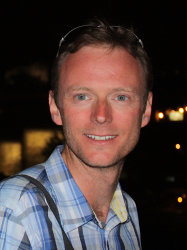BibTex format
@article{Altmann:2020:braincomms/fcaa122,
author = {Altmann, A and Cash, DM and Bocchetta, M and Heller, C and Reynolds, R and Moore, K and Convery, RS and Thomas, DL and van, Swieten JC and Moreno, F and Sanchez-Valle, R and Borroni, B and Laforce, R and Masellis, M and Tartaglia, MC and Graff, C and Galimberti, D and Rowe, JB and Finger, E and Synofzik, M and Vandenberghe, R and de, Mendonca A and Tagliavini, F and Santana, I and Ducharme, S and Butler, CR and Gerhard, A and Levin, J and Danek, A and Frisoni, G and Ghidoni, R and Sorbi, S and Otto, M and Ryten, M and Rohrer, JD},
doi = {braincomms/fcaa122},
journal = {Brain Communications},
pages = {1--13},
title = {Analysis of brain atrophy and local gene expression in genetic frontotemporal dementia},
url = {http://dx.doi.org/10.1093/braincomms/fcaa122},
volume = {2},
year = {2020}
}

